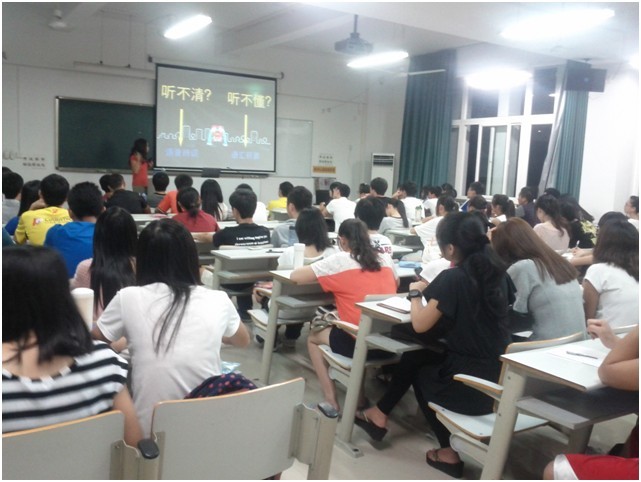 返回
教育头条
返回
教育头条

大学英语六级阅读晨读文章分享 英语四六级报名
下面小编跟大家一起了解大学英语六级阅读晨读美文分享,希望对大家有所帮助。
To understand the emulsifying process, we must first accept the scientific principle that oil and water do not naturally mix. Quite literally, they find each other's presence repulsive. A good illustration of this aversion is homemade oil and vinegar salad dressing.When you shake or beat your salad dressing, you do more than disperse the oil throughout the vinegar: you also break down the oil into droplets minute enough to remain temporarily suspended in the vinegar (which from now on we will call water, because that tart condiment is in effect mainly water). The second you stop agitating the dressing,

the oil droplets start to combine into units too large to be suspended in the water, and thus slither their way upward, separating from the water in the process. The oil rises to the top and the water sinks because oil has a lower specific density than water. If you want a stable emulsion, you need an emulsifying agent which prevents the oil droplets from combining into larger units.
Emulsifying agents occur naturally in many animal substances including egg yolks and milk. An emulsifying agent helps to keep the oil particles from combining in three basic ways. First, the agent coats the oil, serving as a physical barrier between the droplets. Second, it reduces the water's surface tension, which, in turn, reduces the water's ability to repulse oil. Third, the agent gives the surfaces of the oil droplets identical electrical charges; since like charges repel each other the droplets repel each other.
To understand the emulsifying process, we must first accept the scientific principle that oil and water do not naturally mix. Quite literally, they find each other's presence repulsive. A good illustration of this aversion is homemade oil and vinegar salad dressing.When you shake or beat your salad dressing, you do more than disperse the oil throughout the vinegar: you also break down the oil into droplets minute enough to remain temporarily suspended in the vinegar (which from now on we will call water, because that tart condiment is in effect mainly water). The second you stop agitating the dressing,

the oil droplets start to combine into units too large to be suspended in the water, and thus slither their way upward, separating from the water in the process. The oil rises to the top and the water sinks because oil has a lower specific density than water. If you want a stable emulsion, you need an emulsifying agent which prevents the oil droplets from combining into larger units.
Emulsifying agents occur naturally in many animal substances including egg yolks and milk. An emulsifying agent helps to keep the oil particles from combining in three basic ways. First, the agent coats the oil, serving as a physical barrier between the droplets. Second, it reduces the water's surface tension, which, in turn, reduces the water's ability to repulse oil. Third, the agent gives the surfaces of the oil droplets identical electrical charges; since like charges repel each other the droplets repel each other.
以上就是教育宝头条带来的大学英语六级阅读晨读文章分享 英语四六级报名详细介绍,想要查看更多四级六级考试资讯,敬请关注教育宝头条,也可以加我微信18560125702,我会解答你的学习问题。返回教育宝头条
【免责声明】本文仅代表作者本人观点,与教育宝无关。教育宝对文中陈述、观点判断保持中立,不对所包含内容的准确性、可靠性或完整性提供任何保证。请读者仅作参考,特此声明!





